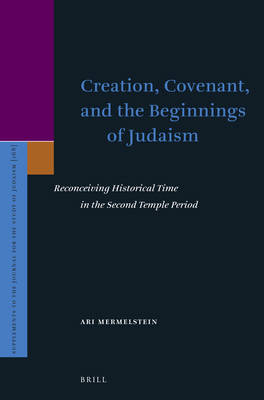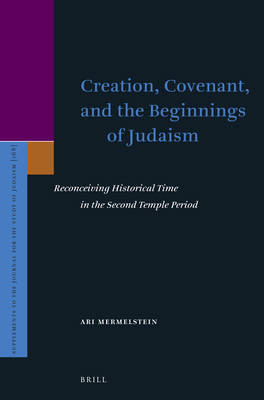
- Afhalen na 1 uur in een winkel met voorraad
- Gratis thuislevering in België vanaf € 30
- Ruim aanbod met 7 miljoen producten
- Afhalen na 1 uur in een winkel met voorraad
- Gratis thuislevering in België vanaf € 30
- Ruim aanbod met 7 miljoen producten
Zoeken
Creation, Covenant, and the Beginnings of Judaism
Reconceiving Historical Time in the Second Temple Period
Ari Mermelstein
€ 210,95
+ 421 punten
Omschrijving
This study examines the relationship between time and history in Second Temple literature. Numerous sources from that period express a belief that Jewish history began with an act of covenant formation and proceeded in linear fashion until the exile, an unprecedented event which severed the present from the past. The authors of Ben Sira, Jubilees, the Animal Apocalypse, and 4 Ezra responded to this theological challenge by claiming instead that Jewish history began at creation. Between creation and redemption, history unfolds as a series of static, repeating patterns that simultaneously account for the disappointments of the Second Temple period and confirm the eternal nature of the covenant. As iterations of timeless, cyclical patterns, the difficult post-exilic present and the glorious redemption of the future emerge as familiar, unremarkable, and inevitable historical developments.
Specificaties
Betrokkenen
- Auteur(s):
- Uitgeverij:
Inhoud
- Aantal bladzijden:
- 228
- Taal:
- Engels
- Reeks:
- Reeksnummer:
- nr. 168
Eigenschappen
- Productcode (EAN):
- 9789004281059
- Verschijningsdatum:
- 22/10/2014
- Uitvoering:
- Hardcover
- Formaat:
- Genaaid
- Afmetingen:
- 163 mm x 241 mm
- Gewicht:
- 517 g

Alleen bij Standaard Boekhandel
+ 421 punten op je klantenkaart van Standaard Boekhandel
Beoordelingen
We publiceren alleen reviews die voldoen aan de voorwaarden voor reviews. Bekijk onze voorwaarden voor reviews.








